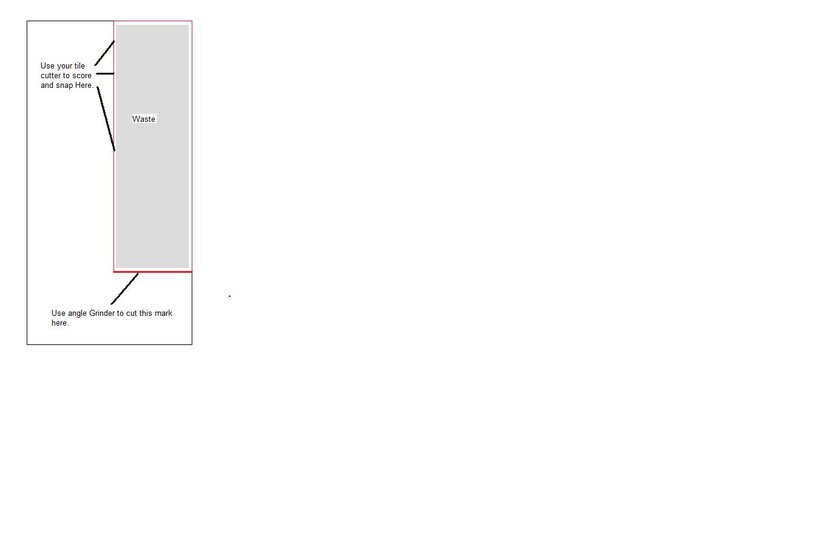M
MICK the Tiler
Just going through a few threads and have noticed there are alot of novice and first time tilers posting on this forum and all seem to be concerned about how long things can take. This is true tiling can be tedious and slow at times and you need the patience of a saint on some projects.
So I thought I might share some tips and tricks with the new folk on how to do some things more efficently. The pros should know most of them by now so this post is aimed at the "GREEN AS GRASS" new tilers. So on to the trick of the week.
THIS WEEKS TRICK
DOING MULTIPLE STRAIGHT CUTS
At some point you are going to have to do alot of straight cuts be it on a floor or on walls this method works on both except walls where you'll have to mark each tile, but for this example we'll look at floor tiles.
So you've just laid the main body of your floor and you just have the cuts to do most new too tiling will grab the tap measure and begin on one side of the tile then the other and transfer these marks to the tile and the cut and fit. But for this tip you can put the tape back in the toolbox and just grab 4 or 5 tiles and lay them out upside down where they are to go, pushing them hard up against the wall then place a mark allowing for a space and wall clearance sighting down over the tile where it overlapps the last full tile go to the number 5 tile and do the same then using a straight edge draw a line connecting the 2 marks. Number the tiles 1-5 and cut on cutter then test fit continue on down the wall until you have cut all the tiles then flip them back and glue them in. It will take some practice and a little time to get it right but once mastered can save alot of valuable time.
Ths method can also be adobted for wall corner cuts as well as wall to floor cuts you simply turn the tile so the back is facng out push good edge into corner or onto floor and mark leaving grout line and clearance do a series and then cut on the tile cutter no measuring required.
Hope you enjoy reading this weeks tips and tricks. Try it on your next project You'll soon be amazed at how quick it can be.
NEXT WEEK !!!!!
Corner cut-outs using the tile cutter :huh2:
So I thought I might share some tips and tricks with the new folk on how to do some things more efficently. The pros should know most of them by now so this post is aimed at the "GREEN AS GRASS" new tilers. So on to the trick of the week.
THIS WEEKS TRICK
DOING MULTIPLE STRAIGHT CUTS
At some point you are going to have to do alot of straight cuts be it on a floor or on walls this method works on both except walls where you'll have to mark each tile, but for this example we'll look at floor tiles.
So you've just laid the main body of your floor and you just have the cuts to do most new too tiling will grab the tap measure and begin on one side of the tile then the other and transfer these marks to the tile and the cut and fit. But for this tip you can put the tape back in the toolbox and just grab 4 or 5 tiles and lay them out upside down where they are to go, pushing them hard up against the wall then place a mark allowing for a space and wall clearance sighting down over the tile where it overlapps the last full tile go to the number 5 tile and do the same then using a straight edge draw a line connecting the 2 marks. Number the tiles 1-5 and cut on cutter then test fit continue on down the wall until you have cut all the tiles then flip them back and glue them in. It will take some practice and a little time to get it right but once mastered can save alot of valuable time.
Ths method can also be adobted for wall corner cuts as well as wall to floor cuts you simply turn the tile so the back is facng out push good edge into corner or onto floor and mark leaving grout line and clearance do a series and then cut on the tile cutter no measuring required.
Hope you enjoy reading this weeks tips and tricks. Try it on your next project You'll soon be amazed at how quick it can be.
NEXT WEEK !!!!!
Corner cut-outs using the tile cutter :huh2:




